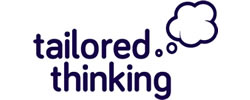We all perceive the world differently. Difference is what makes us human. However, despite our differences, we possess a desire to feel included and that we belong – this is as true at work as it is elsewhere. Yet it can be challenging for organisations to know where to start with creating diverse and inclusive workplaces. In some organisations the diversity & inclusion (D&I) agenda is perceived as a ‘tick box’ exercise designed to ensure legal compliance. A lack of genuine desire and commitment to create diverse and inclusive workplaces can result in strategies which fail to include the very people they are designed to support. Even in more progressive workplaces managers typically don’t recognise, and therefore make the most of, our diversity. At worst, it is ignored and even stifled [1].
The global pandemic forced many of us to consider D&I through a new lens, recognising the differential impact it had on certain groups, and the need to support many individuals through uniquely complex working situations.
Why organisations need to take D&I seriously
Particularly in the current era of globalisation, organisations are beginning to learn that by enabling, supporting and promoting a diverse and inclusive workplace, benefits are being realised that go beyond ‘ticking boxes’. For example, greater profitability, innovation and creativity.
Everyone benefits when we value the rich diversity of thoughts, skills and strengths that people bring to an organisation, which stem from the different experiences, backgrounds and identities we all have. When people feel included they are more engaged, motivated and productive, and report greater levels of psychological wellbeing [2]. Employees from diverse backgrounds are also helping to create more resilient organisations that will ultimately outperform those which don’t invest in D&I.
Genuinely inclusive workplaces aren’t easy to achieve. Workplaces can be diverse but not inclusive, and vice versa. For people to feel valued as individuals, believe that they are treated fairly and feel as though they can fully participate at work, we need to bridge the gap between rhetoric and reality. As the nature of work evolves, this will partly come from adopting more creative and personalised approaches to D&I.
Progressing D&I through personalising work
One potential tool yet to be utilised widely in D&I is job crafting. Job crafting is a research-informed and evidence-based approach to personalising work. Research demonstrates a vast array of positive impacts that it can have on individuals, teams and organisations. At the heart of job crafting is the recognition that we are all different, and that this is something to be embraced. Job crafting enables and encourages people to bring their diverse, whole and best selves to work each day in ways that foster engagement, job satisfaction, resilience and thriving.
Specifically, job crafting could support D&I in the workplace in a number of ways:
Unlocking individual strengths and talents
Job crafting can be a powerful tool for enabling people to individually and collaboratively explore, harness and amplify their talents, strengths and interests in their work. A truly inclusive approach to work is one where individuals are supported, encouraged and trusted to personalise their work.
Encouraging people to express a positive sense of self
Enabling people to bring their “authentic” selves to work is at the centre of any organisational D&I strategy. Studies consistently show that when people are able to express themselves fully in their jobs, they are more engaged and perform better [3]. One of the reasons people personalise their work is to create a more positive sense of self that can be freely expressed and confirmed by others [4]. For example, by changing tasks and relationships to reconcile any negative impressions about their work with the positive identity they have of themselves.

Driving forward equality
We continue to see inequality within workplaces in a variety of ways, typically affecting women and other minority groups – through pay gaps, boardroom representation, and career progression. One-size fits all organisational policies are limited in meeting the needs of all employees (and are often designed with, and for, certain groups), whereas a more personalised approach will go further in addressing the structured inequality permeating society and workplaces.
Adopting a personalised approach to work
If you are invested in D&I you might be curious about job crafting as an approach to personalising work. Particularly given the global pandemic, it’s more important than ever that we consider a more customised approach to address the diverse, complex, and changing needs of our workforce.
There are many different ways you could explore this. Here’s three:
- In order to get a sense of how job crafting works, try it yourself. You are more likely to be able to explain how job crafting works if you can share how you, or your colleagues, have used it. Start with small, deliberate changes.
- Encourage employees to experiment with personalising their work, for example, through creating the space and opportunity for them to explore how they do their job, what takes up their energy, and where their work provides meaning. Although people tend to job craft whether they have been given a mandate or not, we know that it is more powerful and beneficial when people can do this openly in front of their manager.
- There are a vast range of actions organisations can take to progress D&I. Recognise where job crafting adds value, and where top-down interventions remain necessary. For example, consider that in organisations where gender norms are reinforced, women and men are likely to adopt job crafting behaviours differently, and for different purposes, and so personalised working is subject to bias whilst these norms remain unchallenged.
These are just a handful of small steps you could take. In many circumstances, a personalised approach won’t be possible (or appropriate). However, a truly inclusive approach would be one where personalising work is embedded across the entire people experience.
Summary
Job crafting and D&I both have their roots in recognising and valuing difference. Although it isn’t the only method to support D&I, job crafting provides a complimentary route alongside top-down strategies. Not only do individuals benefit from this personalised approach, but when organisations support and train employees to personalise their work, they are also likely to achieve competitive advantage through attracting and retaining a diverse workforce.
If organisations are curious about, and committed to, attracting and unlocking the breadth of experience, talents and interests that sit, often untapped, within their workforce, then it may be time to encourage a more personal touch to work.
 About the author: Charlotte Axon is a Lead People Scientist at Tailored Thinking. Charlotte has a Masters Degree in Occupational Psychology, and has led and supported Diversity & Inclusion projects since 2017 within the Higher Education sector.
About the author: Charlotte Axon is a Lead People Scientist at Tailored Thinking. Charlotte has a Masters Degree in Occupational Psychology, and has led and supported Diversity & Inclusion projects since 2017 within the Higher Education sector.
This article has been kindly repurposed – read the original article
References
- Baker (2020). Personalization at Work.
- Civil Service blog, available at: https://civilservice.blog.gov.uk/2015/07/09/diversity-more-than-a-numbers-game/
- Baker (2020). Personalization at Work.
- Wrzesniewski, A., & Dutton, J. E. (2001). Crafting a job: Revisioning employees as active crafters of their work. Academy of Management Review, 26, 179–201. Available at: https://www.researchgate.net/publication/211396297_Crafting_a_Job_Revisioning_Employees_as_Active_Crafters_of_Their_Work
